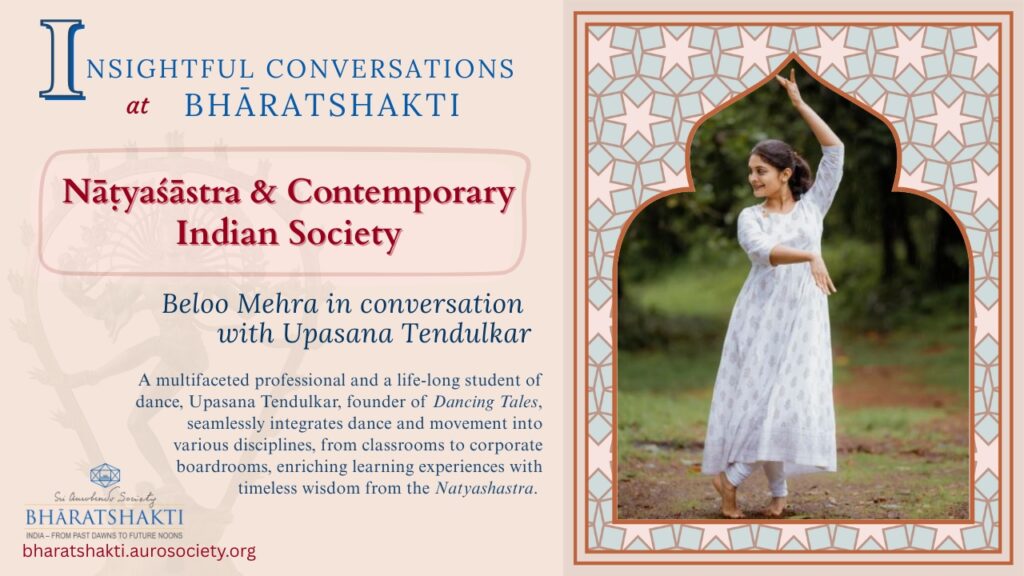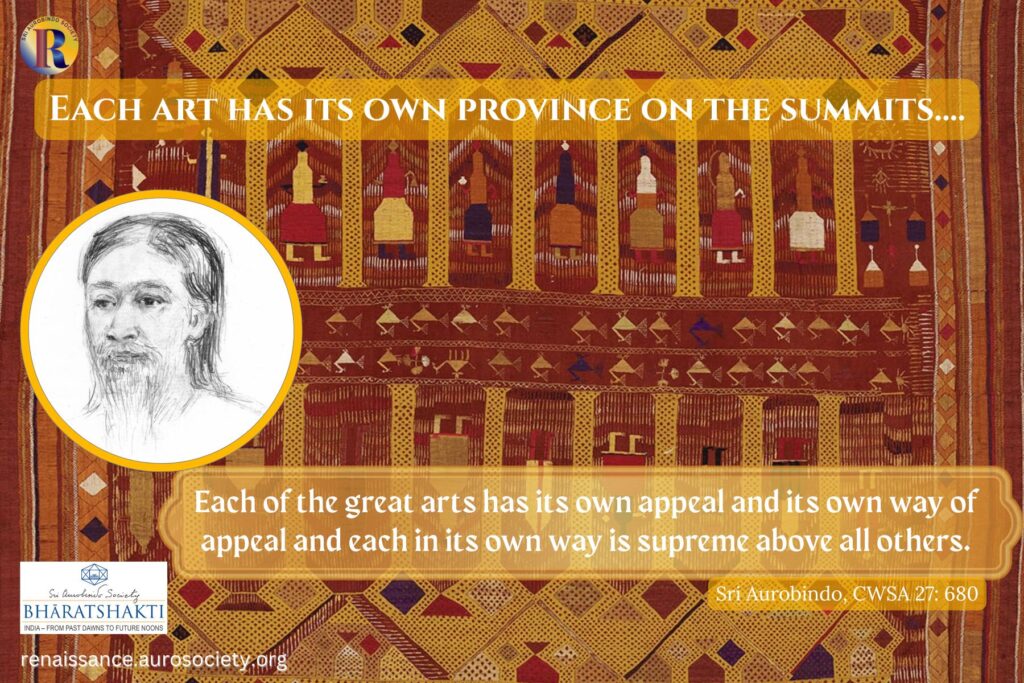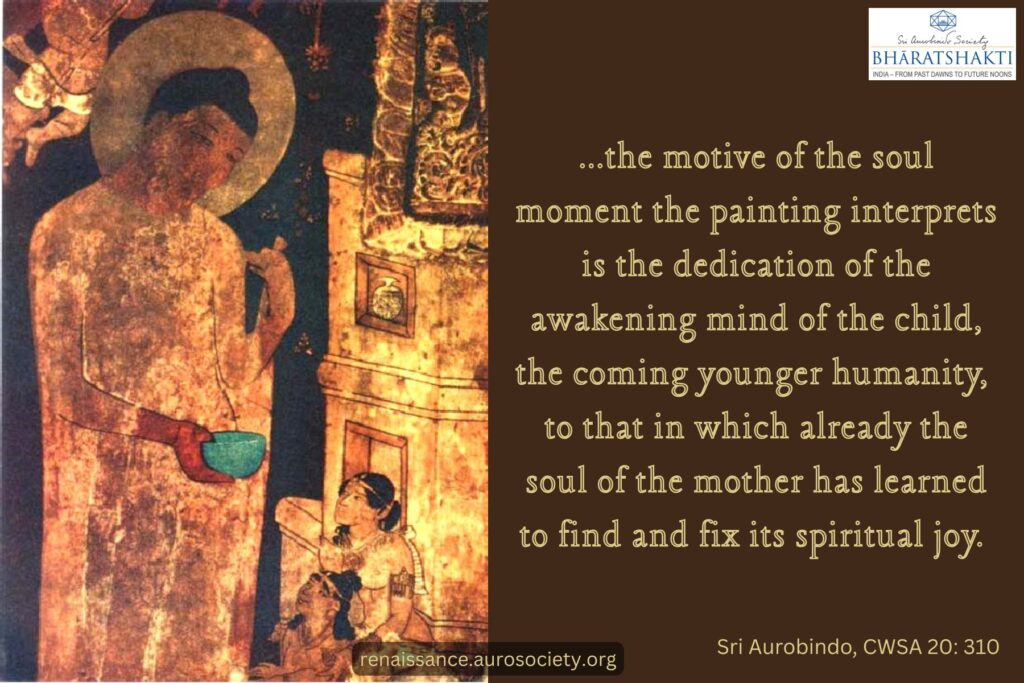Volume V, Issue 9
Author: Sri Aurobindo
Editor’s Note: We feature a few relevant selections from Evening Talks with Sri Aurobindo, as recorded by A. B. Purani. Here we get a deeper understanding of what is beauty, what is its connection with the vital and the psychic, and how is aesthetic refinement is related to spiritual development.
We begin with invoking an important reminder from the Mother.
Pure sense of beauty can be acquired only through a great purification.
~ The Mother, CWM, Vol. 15, p. 233

Disciple: What is it that creates physical beauty?
Sri Aurobindo: There is a certain vital glow which is really not beauty — when it is overpowering and full of personal magnetism it is dangerous.
Disciple: Can heredity account for beauty?
Sri Aurobindo: Not much. Too much of vital glow and charm may be due even to the hostile forces and it may be dangerous.
Disciple: Does beauty belong to the vital world?
Sri Aurobindo: The true vital world is a world full of beauty and grandeur.
Disciple: Is not beauty a part of perfection?
Sri Aurobindo: Yes, it is; but beauty and perfection do not always go together in life.
Disciple: Is not beauty psychic in its origin?
Sri Aurobindo: The psychic element gives only a certain charm to the form, not what people ordinarily call beauty. There is a vital and a physical element in beauty and even in these there is an ‘inner’ beauty, a certain charm, a flame in the object.
Disciple: It is said that Sri Ramakrishna’s body had a glow which he used to hide from men by covering his body. Can one say it was inner beauty?
Sri Aurobindo: It may be the light of the Spirit; that is not beauty. There are many people who are not spiritual but are beautiful and some spiritual men are not beautiful.
Disciple: What is meant by saying that the Supreme is the True, the Good and the Beautiful —satyam-śivam-sundaram?
Sri Aurobindo: That is a different thing. The True can be the mental form of the Supreme Truth, the Good has a relation to morality. Whereas Beauty is different with different men, there is no one standard of beauty. There are certain things, however, which all people consider beautiful: for instance, the rose.
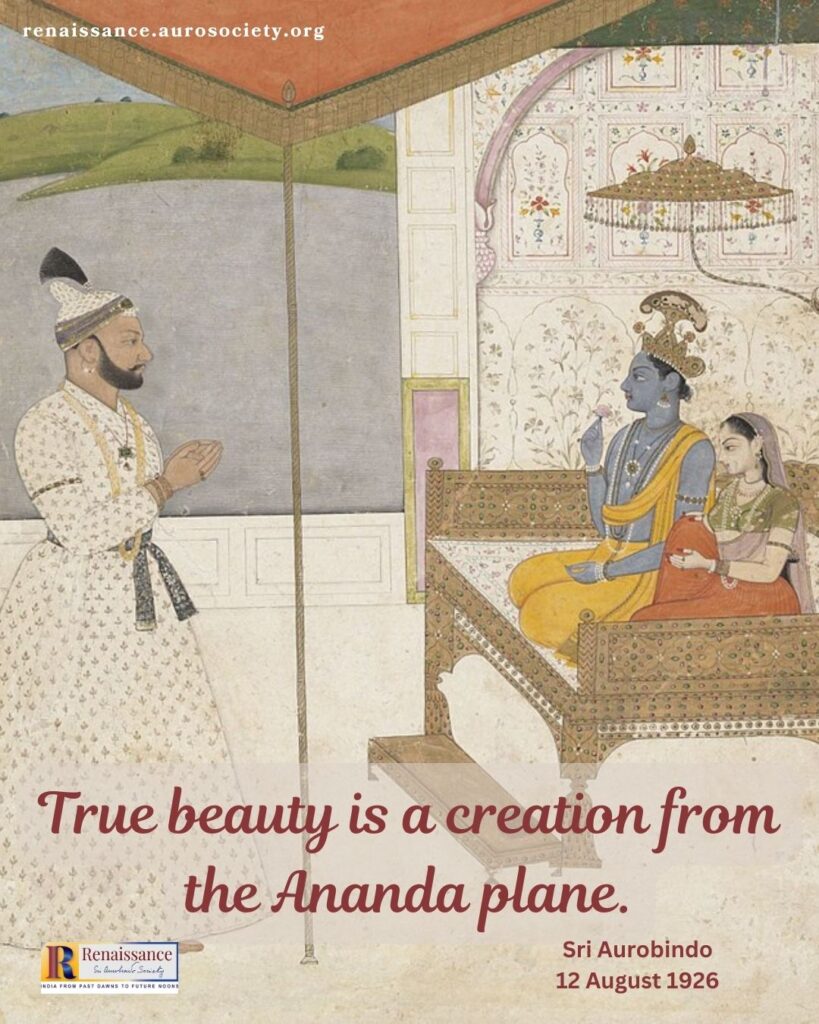
READ:
“Beauty is his footprint…”
Disciple: On what does the creation of beauty depend?
Sri Aurobindo: True beauty is a creation from the Ananda plane.
Disciple: But some people say there is beauty in everything.
Sri Aurobindo: Yes. There is a stage in which everything has its beauty. For a perfect creation of beauty three elements are needed:
- The fundamental element of beauty which is present in everything.
- The pervading quality or Guna.
- The expression or form.
Where these three are in agreement then there is the perfect expression of the Ananda.
Disciple: What is the utility of aesthetic refinement in spiritual development?
Sri Aurobindo: The aesthetic sense is easily purified and it can then open the path of approach to the Supreme through beauty. It is very difficult to purify a rough and gross being.
(12 August 1926)
***
Disciple: Whenever beauty of form is concerned, it is said that certain relations are required to be fulfilled, proportion, harmony, etc. Otherwise the form is not beautiful.
Sri Aurobindo: Well, that is not the whole of beauty. Neither is it the most essential element. You can say “That is how beauty expresses itself.” But it is not the essence of beauty — lines, proportions, etc. are there only its supports, especially in the beauty of forms, not so much in other kinds of beauty. There is, for instance, beauty of emotion, of thought, of force, of Ananda, etc. By observing the rules about line, proportion, rhythm, harmony, etc., a man does not become an artist.
Every time a new creator comes into the field of art he brings something which to others appears perhaps out of proportion. Then a time comes when people begin to see and discover new proportions and a new harmony. Even in music the same thing happens. For instance, when Wagner gave his music it sounded very unusual and, to some, discordant. But at last they found harmony and rhythm and everything else.
Similarly poetry is not some arrangement of words or ideas, it is a power which goes forth from the being of the poet.
In other religions there is a certain insistence on moral virtues, therefore they did not put the same emphasis on beauty. But in India God is the All-beautiful.
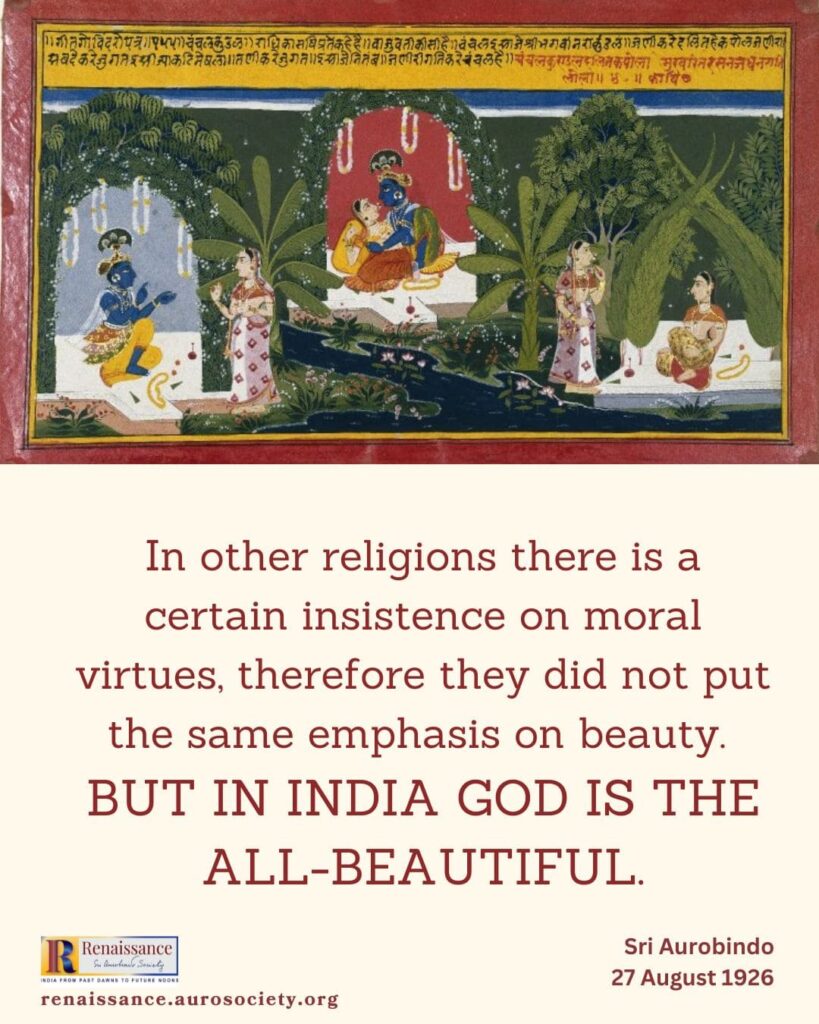
Disciple: What is the relation of beauty and devotion?
Sri Aurobindo: In the path of devotion, the Bhakti Marga in India, God is regarded as the All-beautiful. In the case of other paths it is not so.
Disciple: There is an idea that for art limitation is necessary. There can be no art if there is no restraint and every great artist imposes his own limitations.
Sri Aurobindo: Well, it is not always true. Take the lines and forms used by art. You can say that they serve to limit the expression and there are artists who produce works of art under that kind of restraint. But it is not always so.
Take, for instance, Shakespeare. At first the idea was that in his work there is no measure and harmony. It was considered bizarre. Then they found that it was a work of great art. In a poet like Shakespeare the movement is not towards limitation but rather expression — a throwing himself out to cover everything.
And a work of art is not great unless the artist is able to express the infinite through the limitations, — unless the lines and forms are not overpassed, so to say.
There must be beauty of line and form but that is only the primary basis, — the earth on which you stand, — but it must go beyond and express something from within. That is what we mean when we say that a particular work of art is ‘cold’, though you can see that the beauty of line and form — the technique — is perfect. The work may not be sufficiently ‘inspired’. Take Greek art: it was their aim to put as much of inner beauty as they could in a limited form and line which had set standards. In India we had quite another standard.
Disciple: What is it in beauty that gives us delight?
Sri Aurobindo: Beauty is the Divine himself in his Ananda power seeking to express himself in perfect form.
That is, perhaps, the only definition that could be given. Since you are particular about it one can say that there are several elements of beauty: one is the power of Ananda that seeks expression, the other is the form — or you can say, the manner in which it expresses itself.
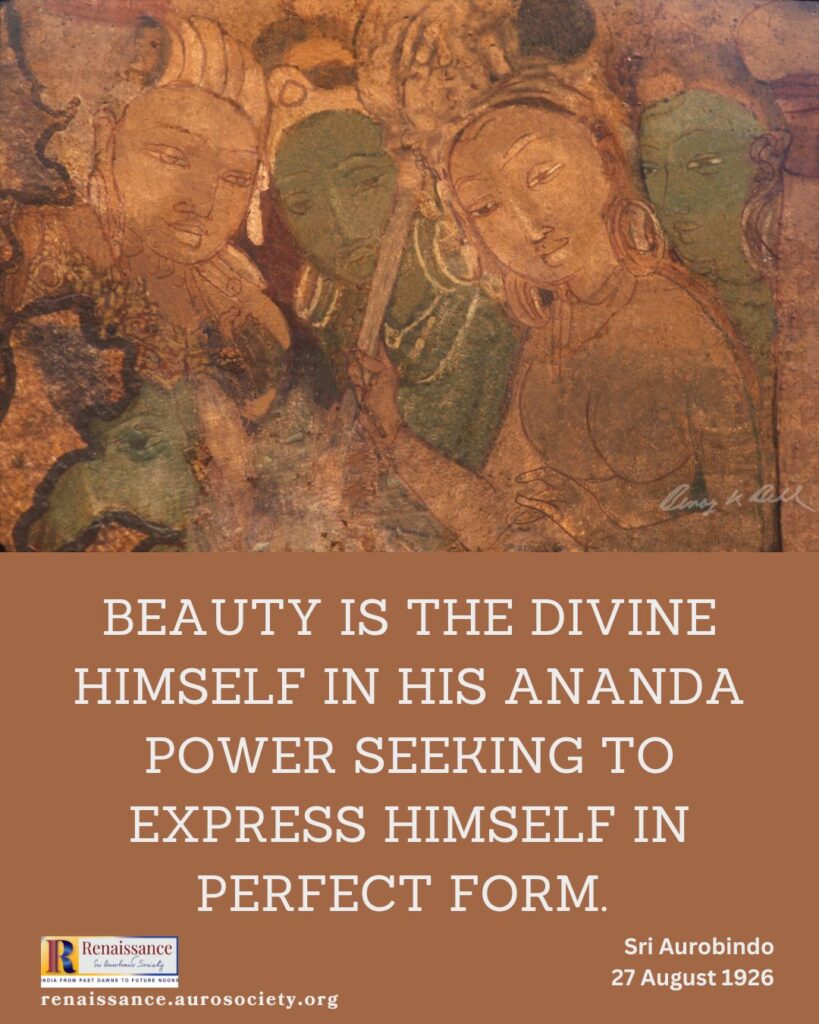
Disciple: I suppose it is also necessary that the physical instrument should be prepared so that it can express perfect beauty.
Sri Aurobindo: Yes, the training of the physical instrument is absolutely essential because without it the work of art cannot take the perfect body.
Disciple: If we look at a man like Tagore, do you think that in a case like his also the physical instruments have to be trained, or can one say that the force which is working in such people creates its own instruments?
Sri Aurobindo: There are people who are born with their physical instrument ready. Even then a lot of training is necessary. Even if the force created its own instrument the work would be uneven — very good at times but very bad at other times.
Disciple: Tagore did a lot of work before he became established as a poet.
Sri Aurobindo: Shakespeare studied all the existing dramas before he wrote his own. One cannot play the violin without training.
Disciple: Would not the Higher Power develop even the physical instrument when it comes down?
Sri Aurobindo: It is a great advantage if you can start with a good instrument.
Disciple: But how is it that when a man appreciates beauty he is not conscious of it as an expression of God?
Sri Aurobindo: There are so many things of which man is not conscious. I am not speaking of what man feels, or sees or is conscious of. I am speaking of what is behind.
Disciple: If a poet does not know the language he cannot be a great poet.
Sri Aurobindo: Nor can he invent rhythms unless he knows prosody. In art, as in everything else, training is necessary; one can develop the sense of beauty consciously.
(27 August 1926)
***
Sri Aurobindo: The further you go back in time the greater the grandeur you meet in the conception. The nearer you come to our time the more the art becomes great in detail. Even up to the time of the Delvada temples something of the old culture was living. One must bring the tide back.
Disciple: But why is it gone?
Sri Aurobindo: That is the law. You can’t have the creative spirit always at the height.
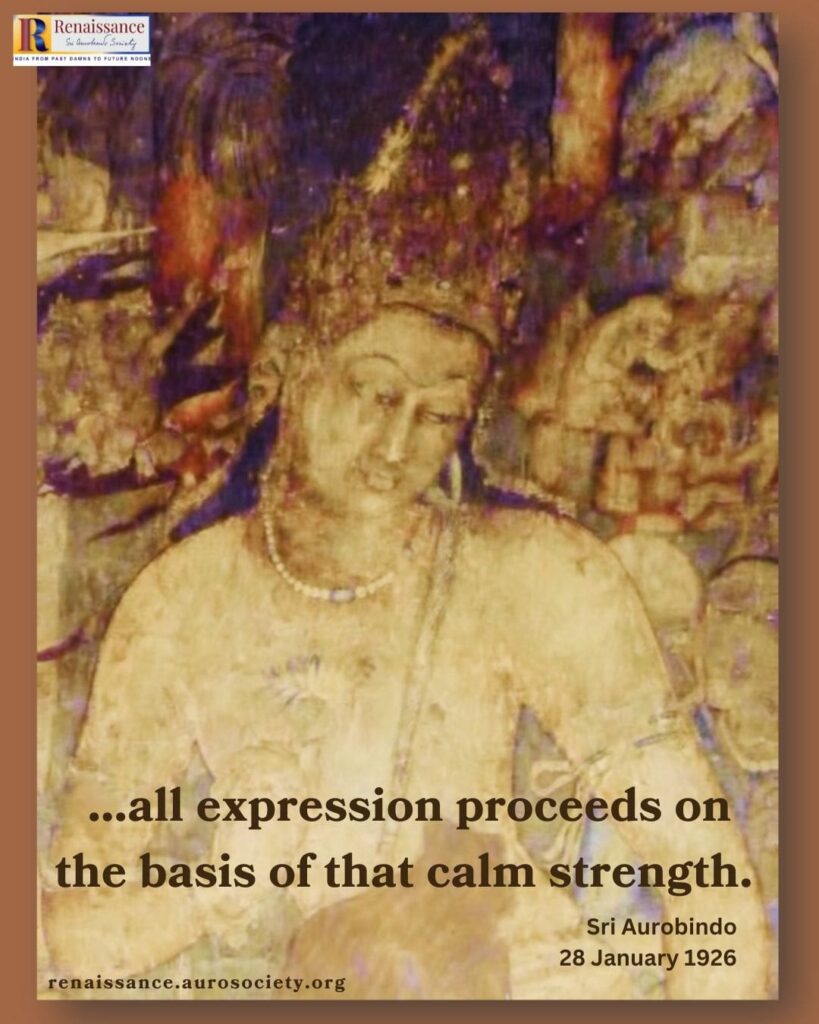
Disciple: What we require is the reawakening of the Spirit, it is not necessary to have the same or similar form or style.
Sri Aurobindo: In spirituality, in the arts, in poetry, you find the same foundation in old times. You find a certain ‘calm strength’ founded on the Spirit, and all expression proceeds on the basis of that calm strength.
In modern art as soon as you begin to give place to, or substitute, vital fantasies and other elements instead of that calm strength you find that art deteriorates. It becomes an effort, a straining to express, it becomes artificial and even vulgar. In ancient times they expressed what they had and were. The Upanishads have not been rivalled since because of their calm strength.
(28 January 1926)
Also read:
Art for Art’s Sake? Certainly, but also Art for Soul’s Sake
~ Design: Beloo Mehra

